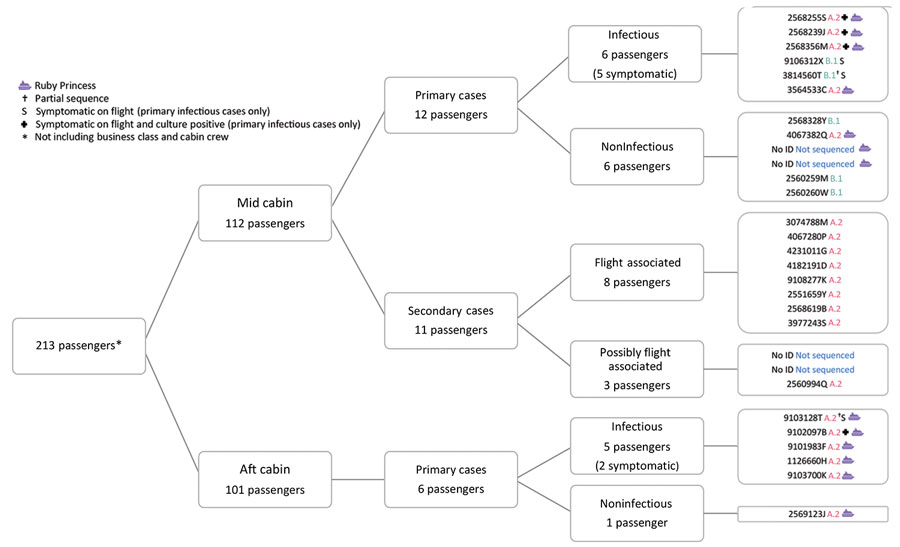Volume 26, Number 12—December 2020
Research
Flight-Associated Transmission of Severe Acute Respiratory Syndrome Coronavirus 2 Corroborated by Whole-Genome Sequencing
Figure 1

Figure 1. Distribution of SARS-CoV-2 infection cases among passengers on a flight from Sydney to Perth, Australia, on March 19, 2020. Far right column shows passenger identification numbers and SARS-CoV-2 lineage determined by whole-genome sequencing (A.2, B.1, not determined).
Page created: September 23, 2020
Page updated: November 19, 2020
Page reviewed: November 19, 2020
The conclusions, findings, and opinions expressed by authors contributing to this journal do not necessarily reflect the official position of the U.S. Department of Health and Human Services, the Public Health Service, the Centers for Disease Control and Prevention, or the authors' affiliated institutions. Use of trade names is for identification only and does not imply endorsement by any of the groups named above.